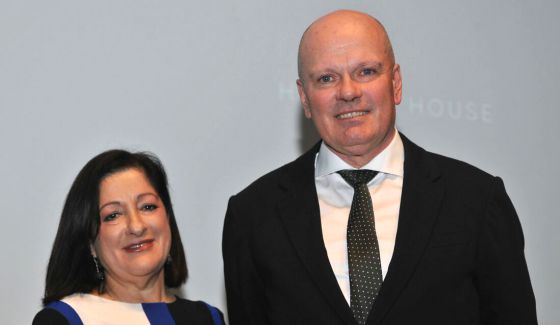MacKay-Lyons receives lifetime honour in London
By Anne Swan
Professor of architecture and founding partner of MacKay-Lyons Sweetapple Architects, Brian MacKay-Lyons (BSc’73, BEDS (NSTC)’77, BArch (NSTC)’78) is one of the most decorated Canadian architects of all time. Known for being what one jury described as “an original voice in the development of a contemporary expression of traditional regional architecture,” Brian has challenged and conquered what is possible for a regular guy from rural Nova Scotia to accomplish. On the heels of two substantial announcements, we sit down with Brian to learn why these latest nods stand out from his growing list of major accomplishments.
An interview with Brian MacKay-Lyons
In September it was announced that you were to be honored as a 2016 RIBA (The Royal Institute of British Architects) International Fellow. What does it mean to be an International Fellow?
Brian: This is a lifetime honour that rewards the particular contributions to architecture by non-UK architects. It is to pay tribute to one’s life’s work and their contribution to the field of Architecture.
Just back from accepting the award in London, how does this recognition stand up with the other awards you have received?
Brian: This is one of the most meaningful awards I have received, right up there with the RAIC Gold Medal, for several reasons. First of all, the RIBA is one of the world’s most respected architecture associations, so naturally I feel the benefit of the prestige associated with that. Secondly, this is a genuine peer award. I was nominated by the past president of the RIBA, Stephen Hodder, whom I admire and respect. The other recipients, most of whom I am lucky to call friends, have among the top architectural CV’s in the world. It feels amazing to be recognized by others who have made amazing architectural contributions. Lastly, I am the fourth Canadian to ever receive this award. There may not be another for some time. To be part of this group is a true honour.
Just last month it was announced that you were part of the design team selected for the Canadian Building Trades Monument. What is this and how did you get involved?
Brian: CBTU (Canada’s Building Trades Unions) intends to create a national monument in Canada’s Capital that will celebrate the contributions made to society by the women and men who work in the building and construction trades, and will commemorate the losses they have endured in carrying out their work. My long time friend and colleague, sculptor John Greer, asked me to join forces to enter the competition. John works within a tradition of stone sculpture. I find his work is abstract but timeless. We had been aware of each other’s work for decades and took this as an opportunity to work together to do something important.
 Why do you think this is important?
Why do you think this is important?
Brian: I felt it a natural connection for me and certainly for John as well. There has to be a strong partnership between architects and the trades in order for us to be successful. I have a great respect for the trades as they enable all the work that I do. I feel that deep respect came through in the proposal. Also, Maritimers haven’t traditionally gotten involved with these types of national projects. It feels good to, along with John, represent our region while paying tribute to the vast accomplishments of so many.
How was the process of creating your concept? Was it challenging for you?
Brian: The challenge in creating public art is that people think they want to see representational art, something that means something to them directly. We wanted to create something figurative but abstract. We knew it must be clear and appropriate to do this and the symbolism must be right on and relevant. That being said, we both felt a strong connection to this project and the concept flowed nicely.
What strengths did you bring to the design team?
Brian: We wanted to make not only a ‘thing’ but a ‘place.’ It is a mixture of sculpture and urban design. We have experience with place-making in all our work through the years. The monument won’t only be a thing, it will be a place – a place where people can go and reflect.
When will it be built and what will it look like?
Brian: It is slated for installation in 2017. It will be built in Canada with Cambrian black granite, from Quebec. The most prominent feature is a pair of oversized plumb bobs, like human figures, which are some of the oldest building tools known to man. It will also feature an assortment of iconic tools which will be selected by the trade unions.
Photo credit: MacKay-Lyons Sweetapple Architects
